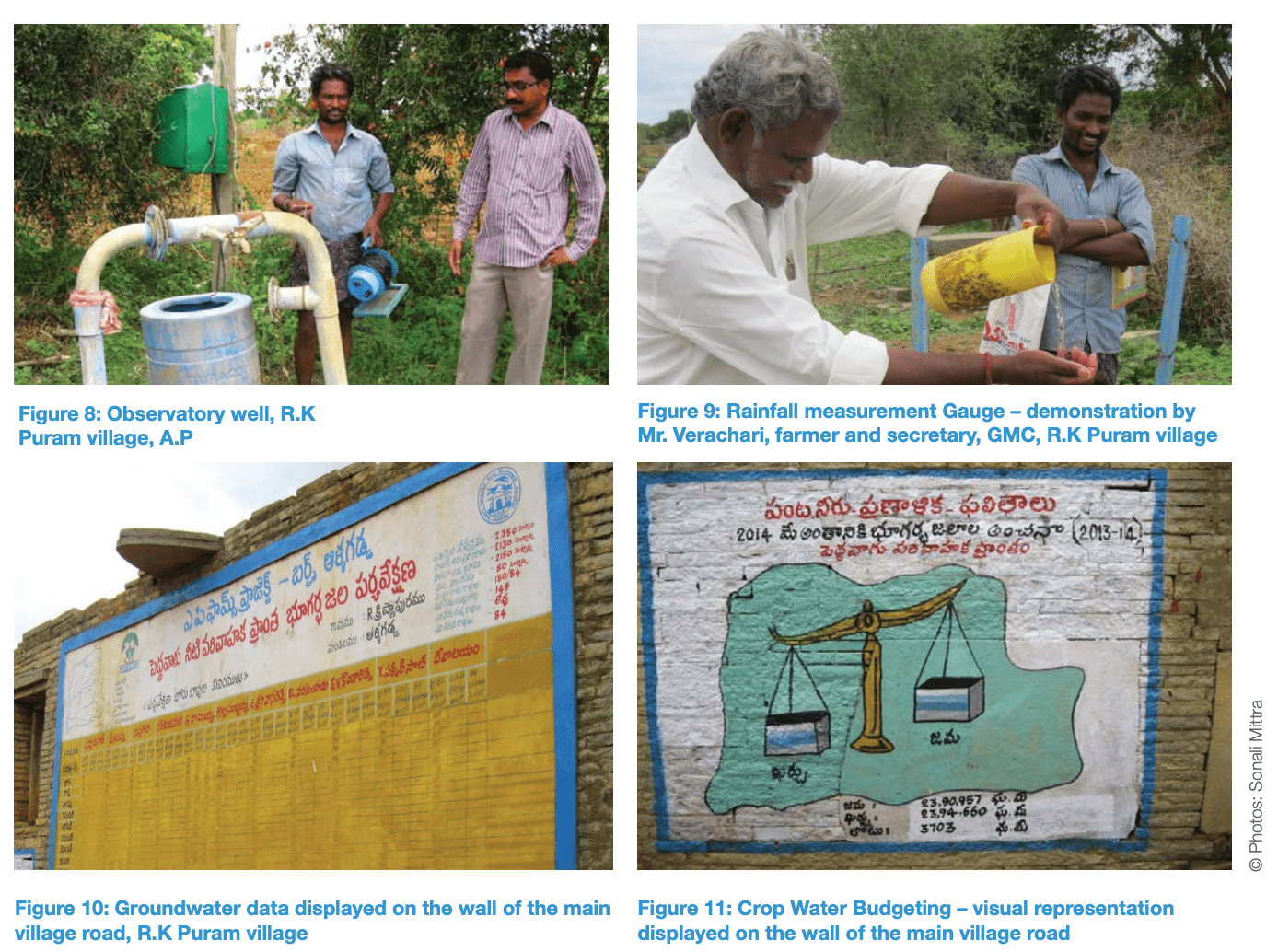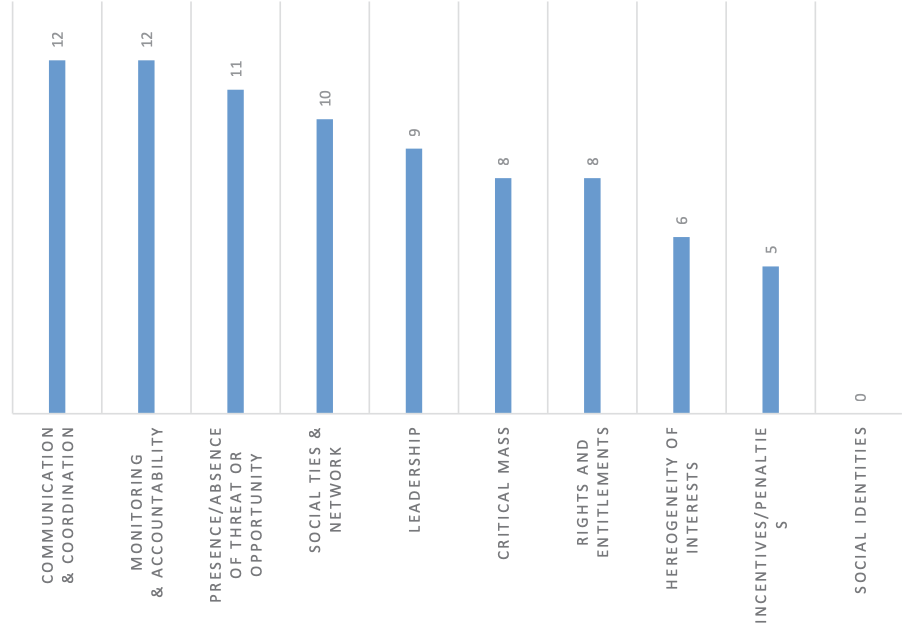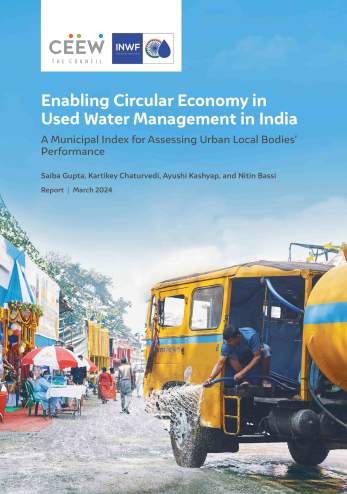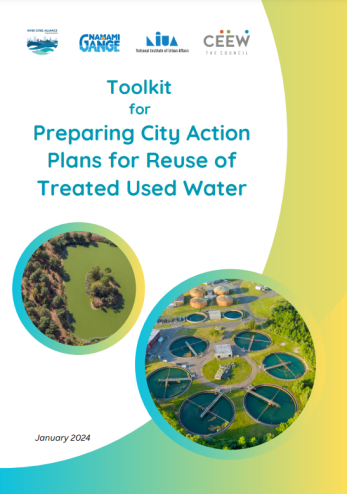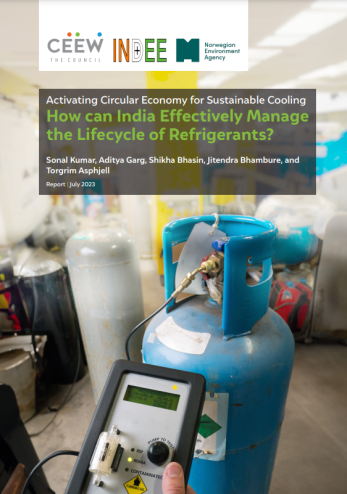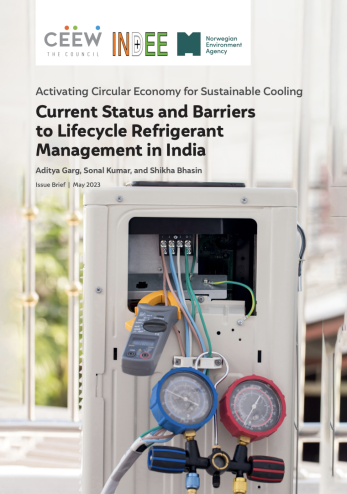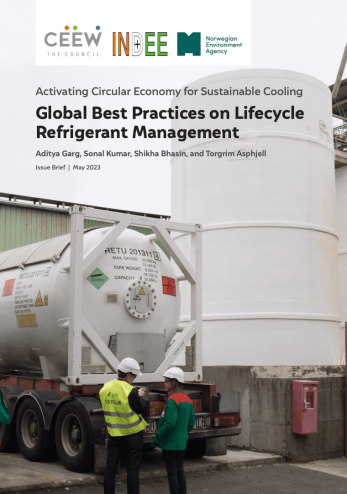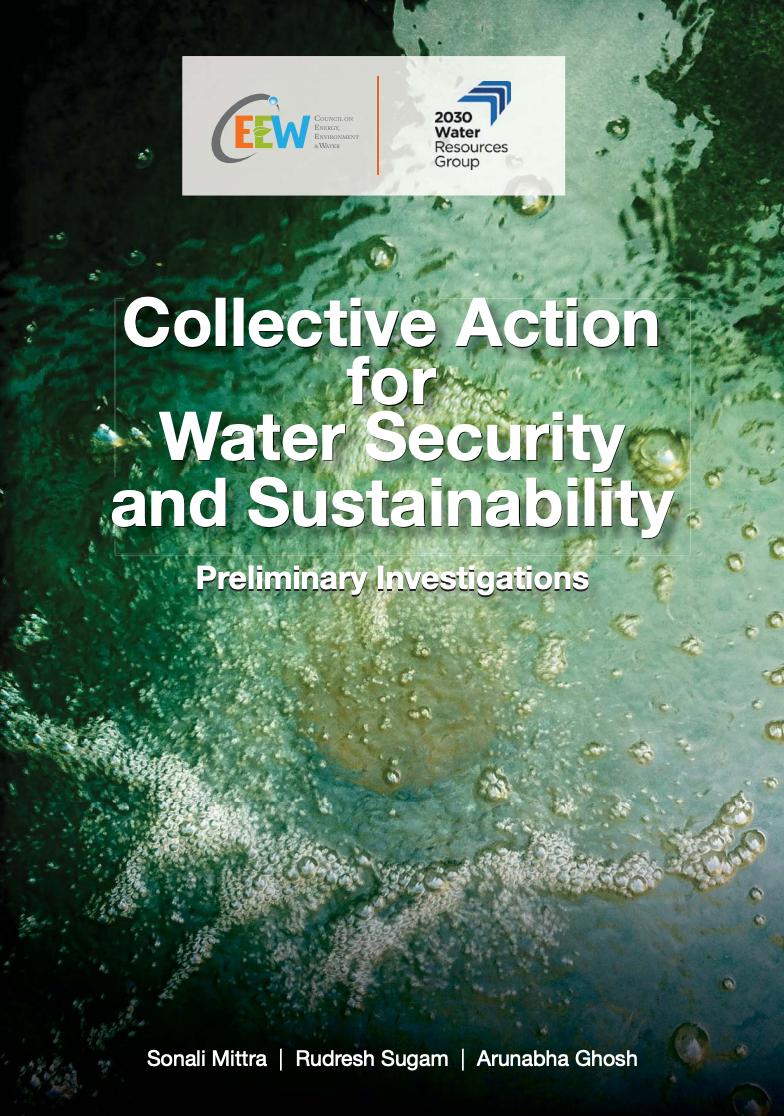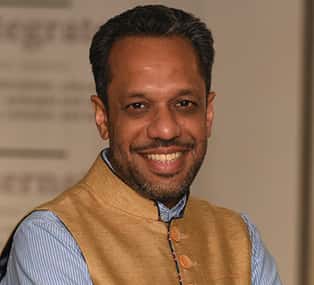Suggested Citation: Mittra, Sonali, Rudresh Sugam, Arunabha Ghosh. 2014. Collective Action for Water Security and Sustainability: Preliminary Investigations. New Delhi: Council on Energy, Environment and Water.
Overview
In collaboration with 2030 Water Resources Group (WRG), this study analyses the factors for collective action for water security and sustainability in India at different hydrological scales. It evaluates four national and two global case studies and describes the analytical framework and methodology used. The study discusses collective action factors’ significance in the Indian context using a coding scheme and factors’ rating.
The study derives its motivation from the preliminary investigation conducted for the National Water Platform (NWP) in India, published by CEEW and 2030 WRG in 2013. It is set against the backdrop of interdependencies and insecurities among four actors in the country’s water ecosystem — the government, the civil society, the industry sector, and bilateral and multilateral donors — obstructing collective cross-sectoral efforts for sustainable water management.
Source: CEEW Field Visit to R.K Puram Village and Peddavagu Village in Kurnoor district, Andhra Pradesh in August 2014
Key Findings
- The factor that scored the highest across all the cases was the presence of a strong communication and coordination mechanism.
- In order to sustain any action-oriented project, monitoring and accountability frameworks are an absolute necessity.
- The factor that gained the third-highest rating across all cases (barring one) was the presence of a threat/opportunity. Threat to lives and livelihoods due to water scarcity and pollution, low water productivity in agriculture, water unavailability for industrial operations, and ecological degradation due to excessive abstraction were some of the common triggers for collective action to be initiated.
- Building trust and coordination among stakeholders, who were in some cases geographically distant and culturally different and in others had strong historical reputations, was flagged as one of the primary challenges faced.
- Strong leadership was rated as one of the important factors in bringing collective action to reality.
- Critical mass - the size of the initial member team that conducted pilot - was graded as the next important factor for the success of collective action.
- Another important factor is the presence or absence of definitive rights and entitlements around the water resource. Ownership, management, and exclusion rights of water were either not clearly defined in most cases or lacked effective implementation.
- Wide heterogeneity of interests among stakeholder groups was expected to inhibit collective action in the analytical framework. However, the intensity of threat and transparent communication mechanisms neutralised heterogeneity of interests in the cases studied.
- Incentives and penalties have been categorised as important factors, which could foster collective action, but are not necessarily critical.
- Of all the factors, social identities received the lowest appraisal. Social identities did not seem to be an inhibiting factor in the case analyses, presumably, for the same reasons stated for heterogeneity of interests.
Factors for collective action on a scale of significance
Source: Author’s Analysis
Key Recommendations
- Analyse threats and opportunities: Deploy analytical tools such as water risk assessment tool, water footprint, life cycle assessment, environmental impact assessments, etc. to understand the type, intensity, characteristic of threat and the affected population to analyse threats.
- Convene Stakeholders: Convene scientific and technical bodies, water users’ groups, and other relevant stakeholder groups to undertake participatory data collection.
- Establish voluntary standards and codes: Programme initiators should act as a convening body for industries and other major water users to establish voluntary standards and rules for water management.
- Transform collective decision-making: Identify stakeholders with a wider reach, diverse skills, and dense networks through various initiatives. Participatory approaches could be used to generate ideas from communities, civil society organisations, government agencies and other interested parties to collectively decide on which projects to initiate.
- Build Leadership skills at local levels: Build technical, financial, organisational and management capacities of local representatives to create village level leaders through training workshops and modules for continuous skill improvement.
- Build critical mass for different programme stages: Convene key representatives from each of the relevant stakeholder groups in project design to form a critical mass.
- Formulate rights and responsibilities through participatory means: Convene stakeholders at an early stage to define clear rules and norms for water allocation and distribution in an inclusive participatory manner.
- Establish forums for communication and learning: Facilitate the involvement of government organisations, departments, and ministries necessary for legal, administrative and political support for formalising the communication and coordination processes.
- Commission independent third-party evaluations: Commission independent third-party evaluations to monitor and analyse successes/ failures of the interventions at different phases.
- Facilitate collective review and accountability procedures: Convene all relevant stakeholders to review the evidence provided by the independent monitoring report and create accountability measures for addressing the concerns.
- Develop and communicate exit strategies: Ensure that all relevant stakeholders devise their respective exit strategies in consultation with all other stakeholders.
Communication and coordination among interested parties and stakeholders is the backbone of any water management project. Rigorous monitoring and accountability systems are an imperative for collective action to become self-sustaining and resilient to changing socio- environmental conditions.




